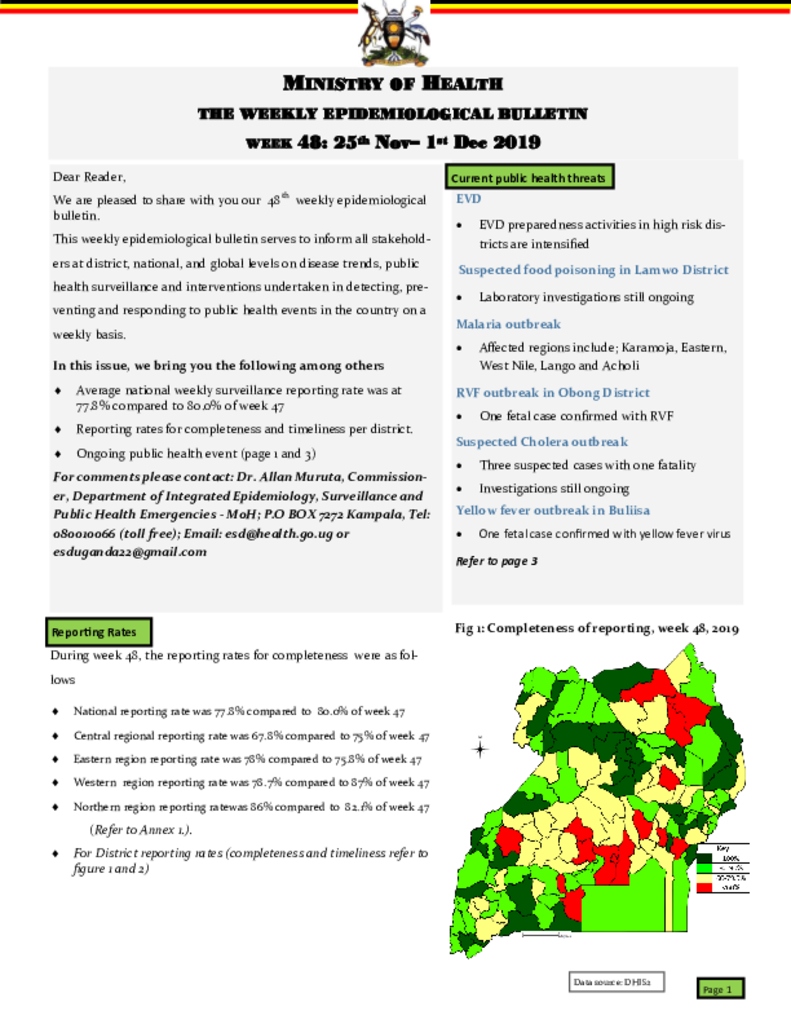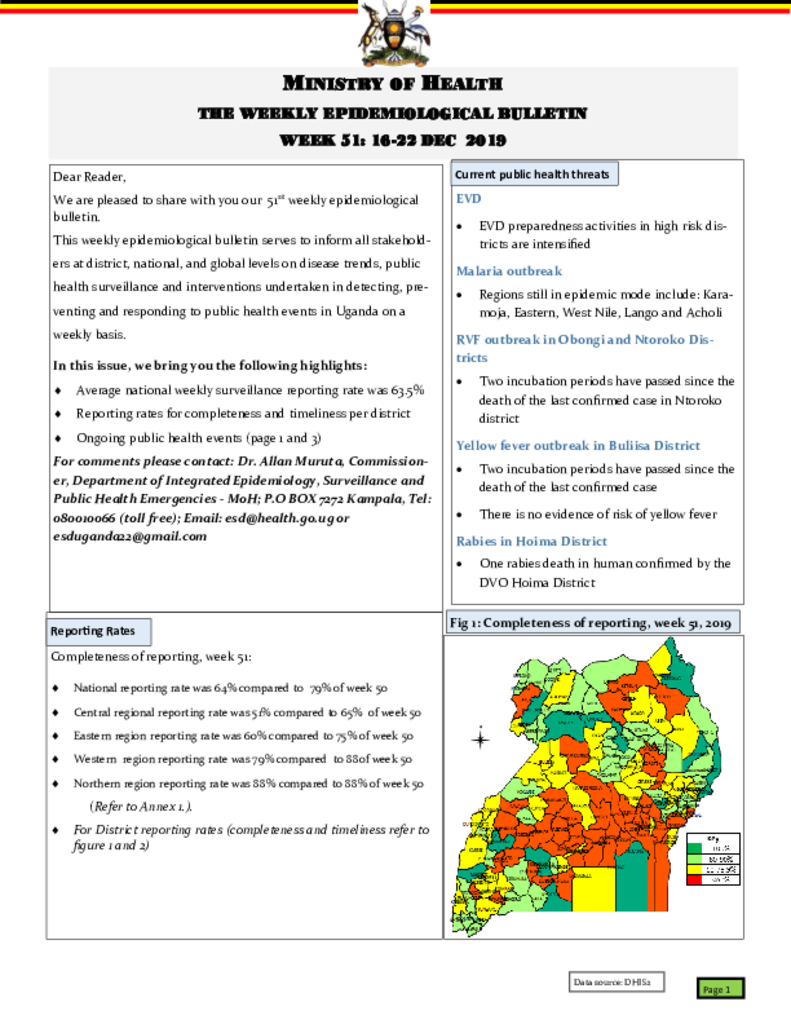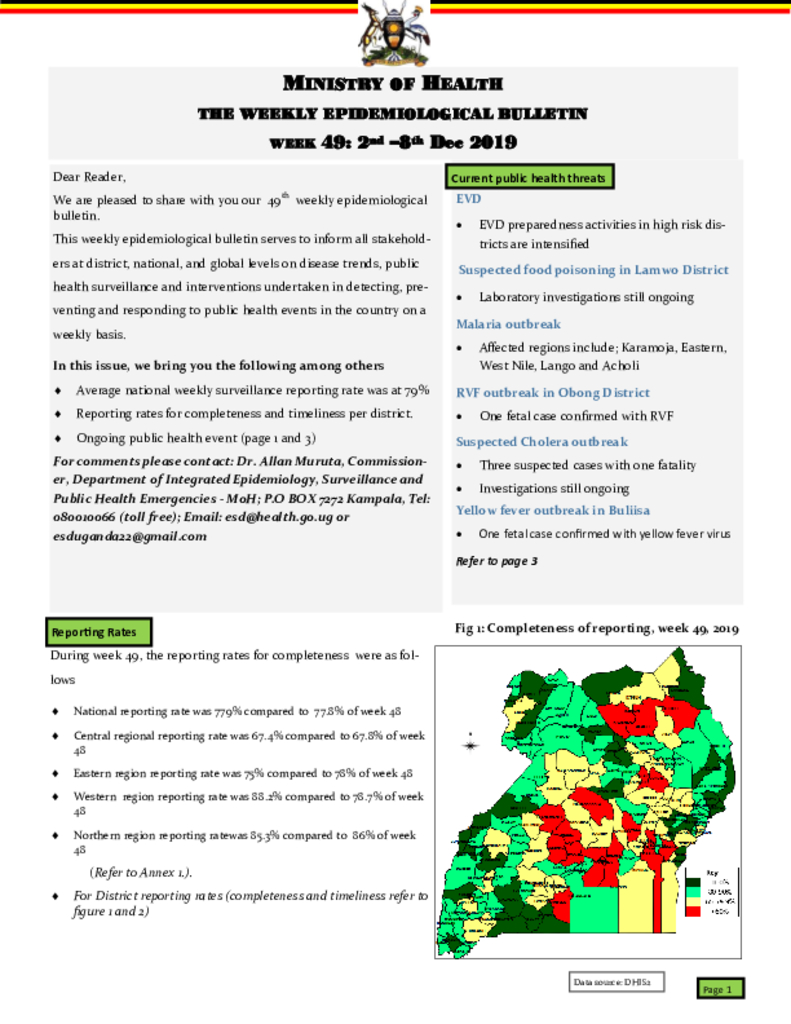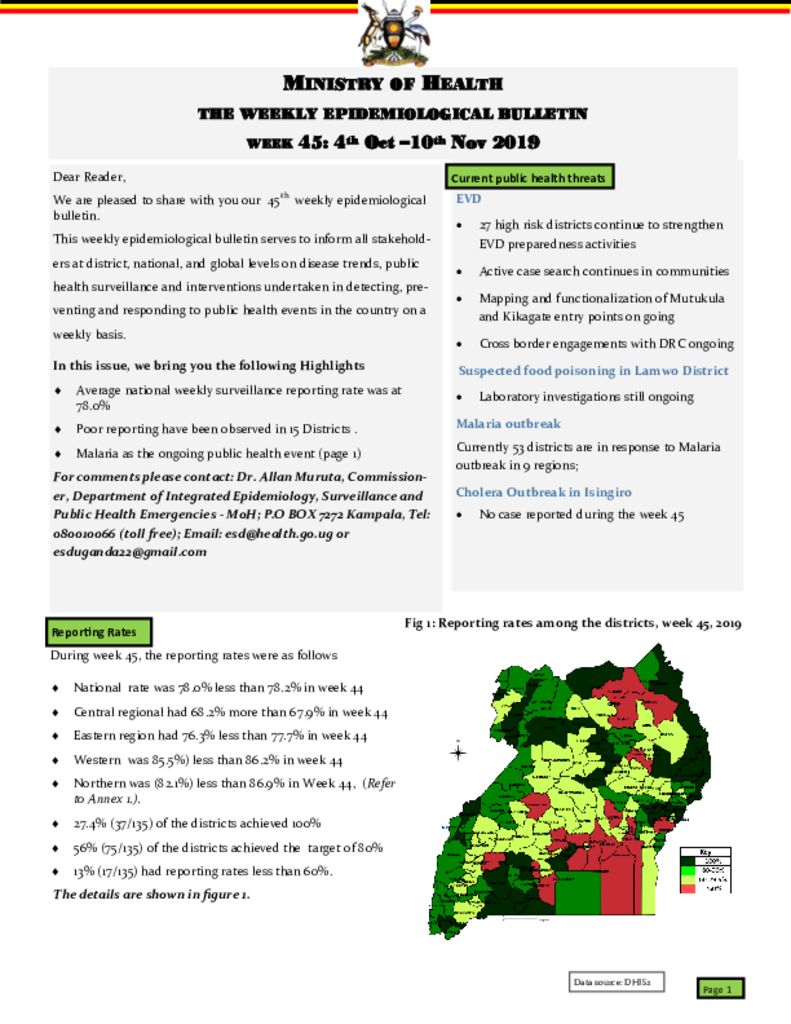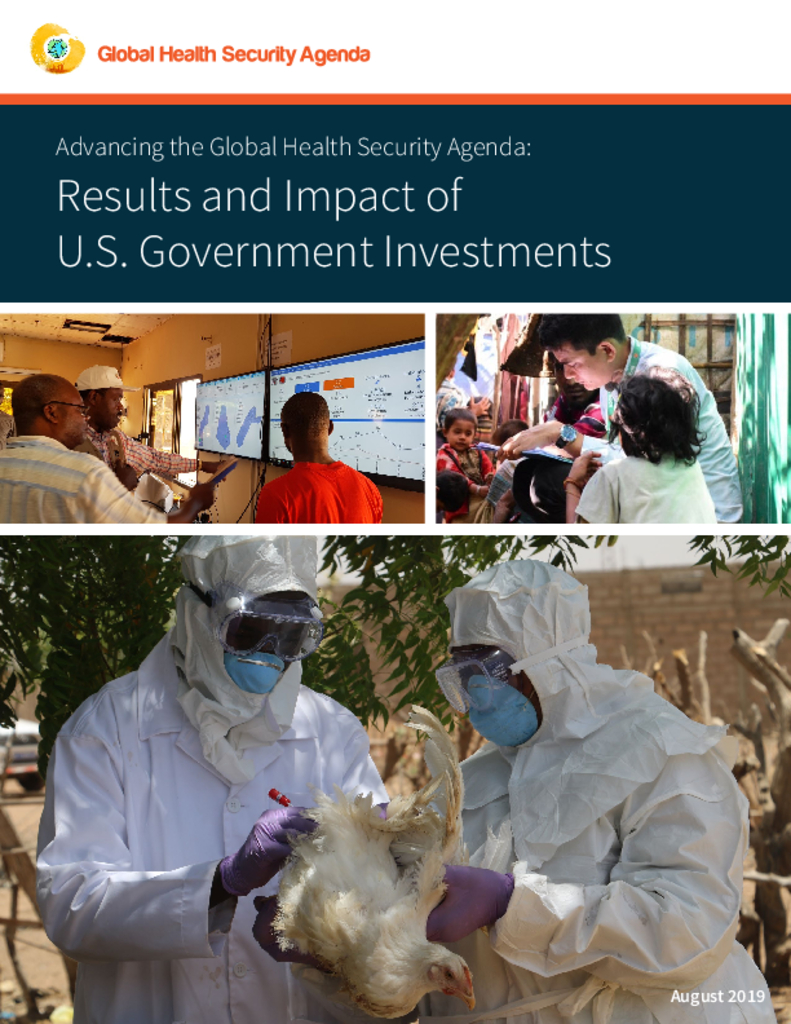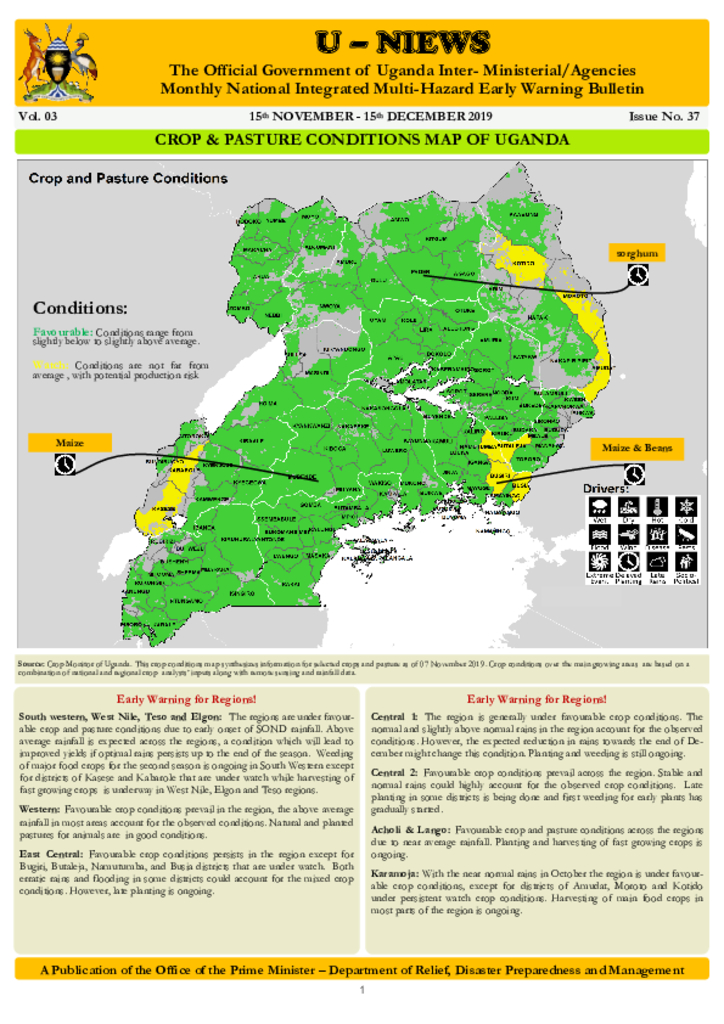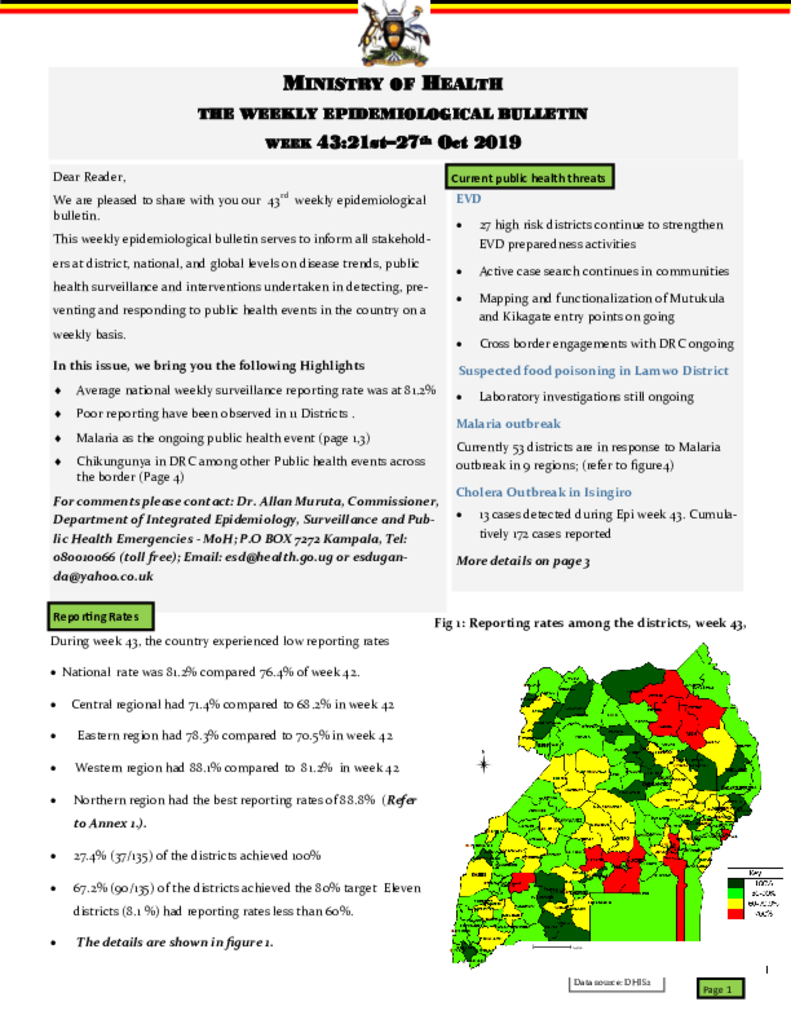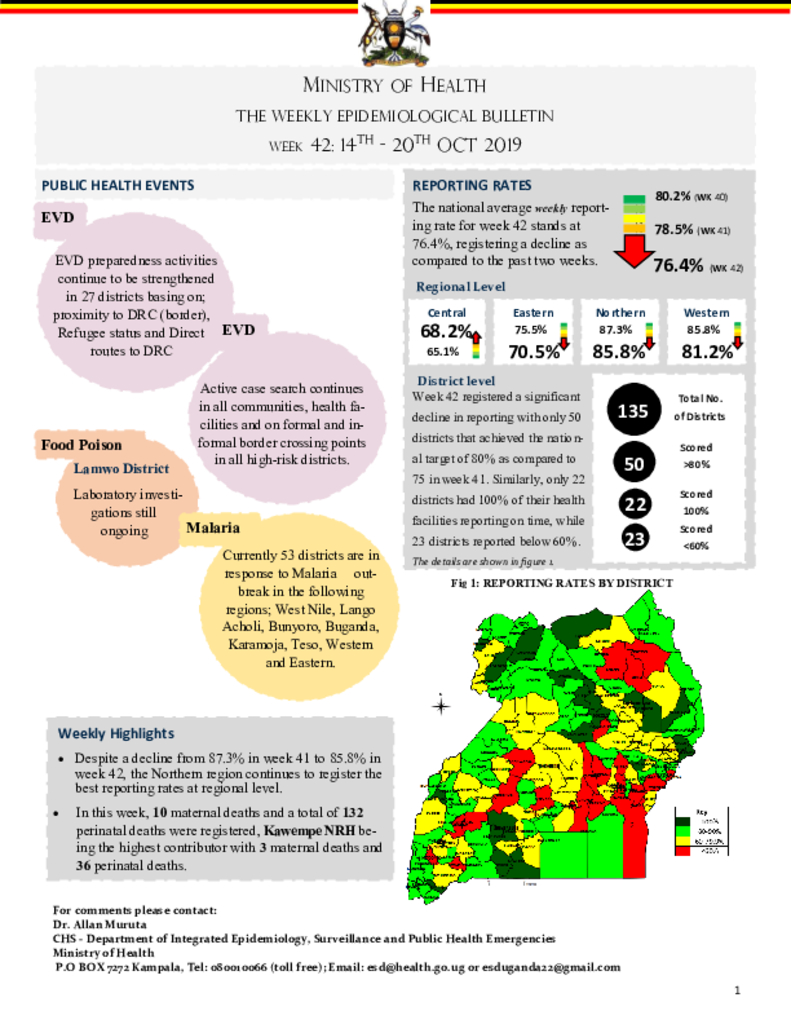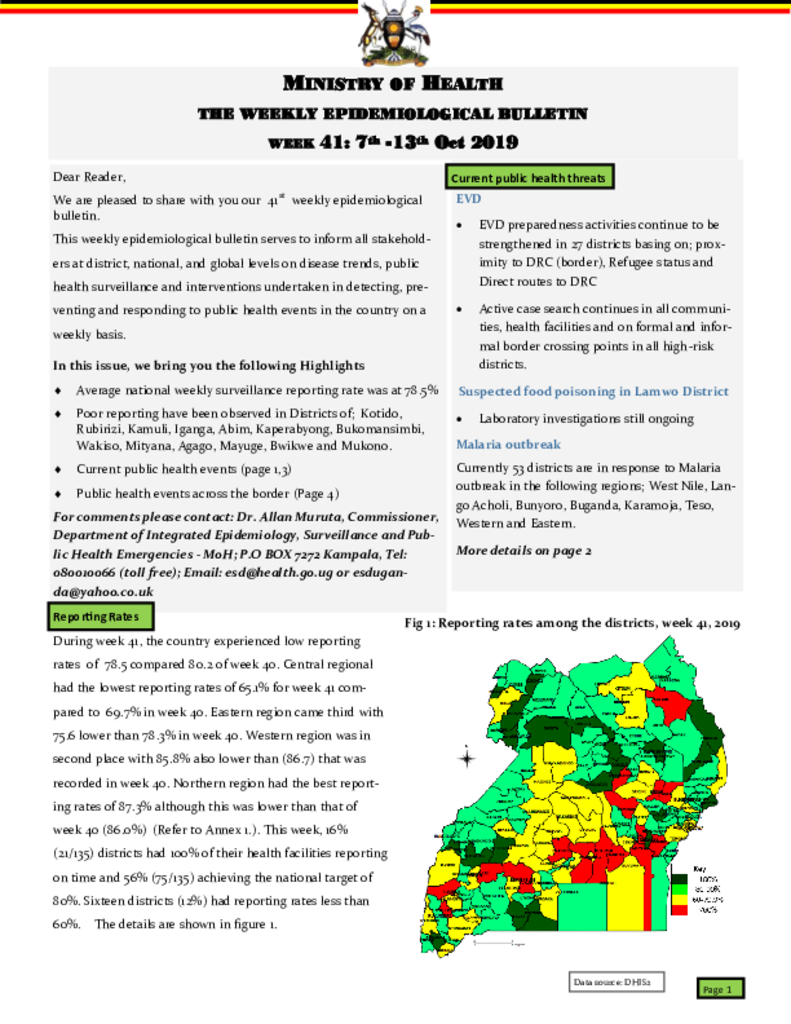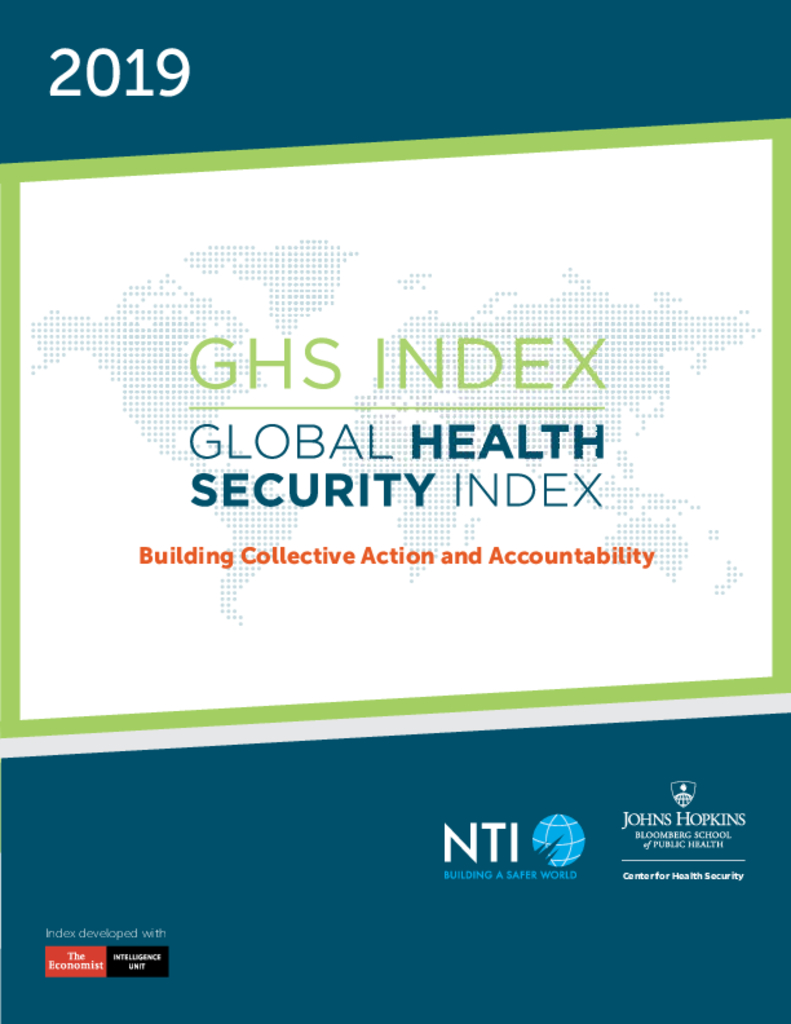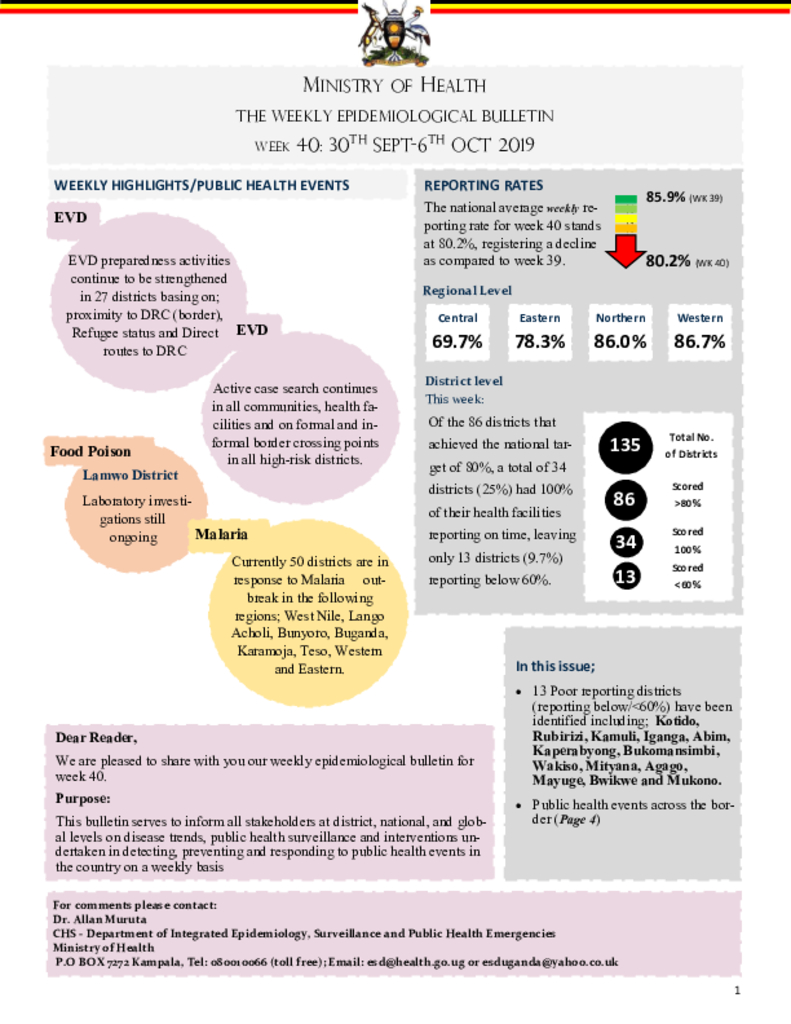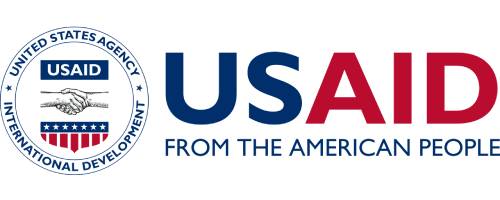This weekly epidemiological bulletin serves to inform all stakehold-ers at district, national, and global levels on disease trends, public health surveillance and interventions undertaken in detecting, pre-venting and responding to public health events in the country on a weekly basis.
In this issue, we bring you the following among others, Average national weekly surveillance reporting rate was at 77.8% compared to 80.0% of week 47, Reporting rates for completeness and timeliness per district. Ongoing public health event (page 1 and 3)
During week 48, the reporting rates for completeness were as fol-lows, National reporting rate was 77.8% compared to 80.0% of week 47, Central regional reporting rate was 67.8% compared to 75% of week 47, Eastern region reporting rate was 78% compared to 75.8% of week 47, Western region reporting rate was 78.7% compared to 87% of week 47, Northern region reporting ratewas 86% compared to 82.1% of week 47
This weekly epidemiological bulletin serves to inform all stakeholders at district, national, and global levels on disease trends, public health surveillance and interventions undertaken in detecting, preventing and responding to public health events in Uganda on a weekly basis.
In this issue, we bring you the following highlights: Average national weekly surveillance reporting rate was 63.5%, Reporting rates for completeness and timeliness per district, Ongoing public health events (page 1 and 3) Completeness of reporting, week 51: National reporting rate was 64% compared to 79% of week 50, Central regional reporting rate was 51% compared to 65% of week 50, Eastern region reporting rate was 60% compared to 75% of week 50, Western region reporting rate was 79% compared to 88of week 50, Northern region reporting rate was 88% compared to 88% of week 50.
This weekly epidemiological bulletin serves to inform all stakehold-ers at district, national, and global levels on disease trends, public health surveillance and interventions undertaken in detecting, pre-venting and responding to public health events in the country on a weekly basis.
In this issue, we bring you the following among others, Average national weekly surveillance reporting rate was at 79%, Reporting rates for completeness and timeliness per district. Ongoing public health event (page 1 and 3)
During week 45, the reporting rates were as follows, National rate was 78.0% less than 78.2% in week 44, Central regional had 68.2% more than 67.9% in week 44
Eastern region had 76.3% less than 77.7% in week 44, Western was 85.5%) less than 86.2% in week 44, Northern was (82.1%) less than 86.9% in Week 44, (Refer to Annex 1.). 27.4% (37/135) of the districts achieved 100%, 56% (75/135) of the districts achieved the target of 80%, 13% (17/135) had reporting rates less than 60%.
This report details the results and progress achieved through United States investments in global health security, including efforts that enhance the global capacity to respond to and contain outbreaks of high-threat diseases such as Ebola, Zika, Rift Valley fever, and pandemic influenza.
The Joint FAO/WHO Expert Committee on Food Additives (JECFA) met in Geneva from 12 to 21 June 2018. The meeting was opened by Dr Kazuaki Miyagishima, Director of the Department of Food Safety and Zoonoses of the World Health Organization (WHO), on behalf of WHO Director-General Dr Tedros Adhanom Ghebreyesus. Dr Miyagishima reported that the 2018 World Health Assembly adopted the general programme of work for 2019–2023, and that Codex continues to be a high priority.
South western, West Nile, Teso and Elgon: The regions are under favourable crop and pasture conditions due to early onset of SOND rainfall. Above average rainfall is expected across the regions, a condition which will lead to improved yields if optimal rains persists up to the end of the season. Weeding of major food crops for the second season is ongoing in South Western except for districts of Kasese and Kabarole that are under watch while harvesting of fast growing crops is underway in West Nile, Elgon and Teso regions.
During week 43, the country experienced low reporting rates National rate was 81.2% compared 76.4% of week 42. Central regional had 71.4% compared to 68.2% in week 42 Eastern region had 78.3% compared to 70.5% in week 42 Western region had 88.1% compared to 81.2% in week 42 Northern region had the best reporting rates of 88.8% (Refer to Annex 1.). 27.4% (37/135) of the districts achieved 100% 67.2% (90/135) of the districts achieved the 80% target Eleven districts (8.1 %) had reporting rates less than 60%. The details are shown in figure 1.Reporting Rates
During week 42, a total of 39,657 cases were reported from 16 conditions of priority. This resulted into 41 deaths due to malaria. Typhoid, Measles, Malaria, Dysentery, SARI and Animal bites were the leading causes of morbidity during this epidemiological week. Sadly, 132 babies died within one week of life and 10 mothers died while in the process of de-livery. All these are preventable deaths.
This weekly epidemiological bulletin serves to inform all stakeholders at district, national, and global levels on disease trends, public health surveillance and interventions undertaken in detecting, preventing and responding to public health events in the country on a weekly basis.
In this issue, we bring you the following Highlights. Average national weekly surveillance reporting rate was at 78.5%, Poor reporting have been observed in Districts of; Kotido, Rubirizi, Kamuli, Iganga, Abim, Kaperabyong, Bukomansimbi, Wakiso, Mityana, Agago, Mayuge, Bwikwe and Mukono.
Current public health events (page 1,3) Public health events across the border
The Global Health Security (GHS) Index is the first comprehensive assessment and benchmarking of health security and related capabilities across the 195 countries that make up the States Parties to the International Health Regulations (IHR [2005]).
During week 40, a total of 52,261 cases were reported from 16 conditions of priority. This resulted into 34 deaths due to malaria. Malaria, Typhoid, Measles and Dysentery were the leading causes of morbidity during this epidemiological week. Sadly, 179 babies died within one week of life and 14 mothers died while in the process of delivery
